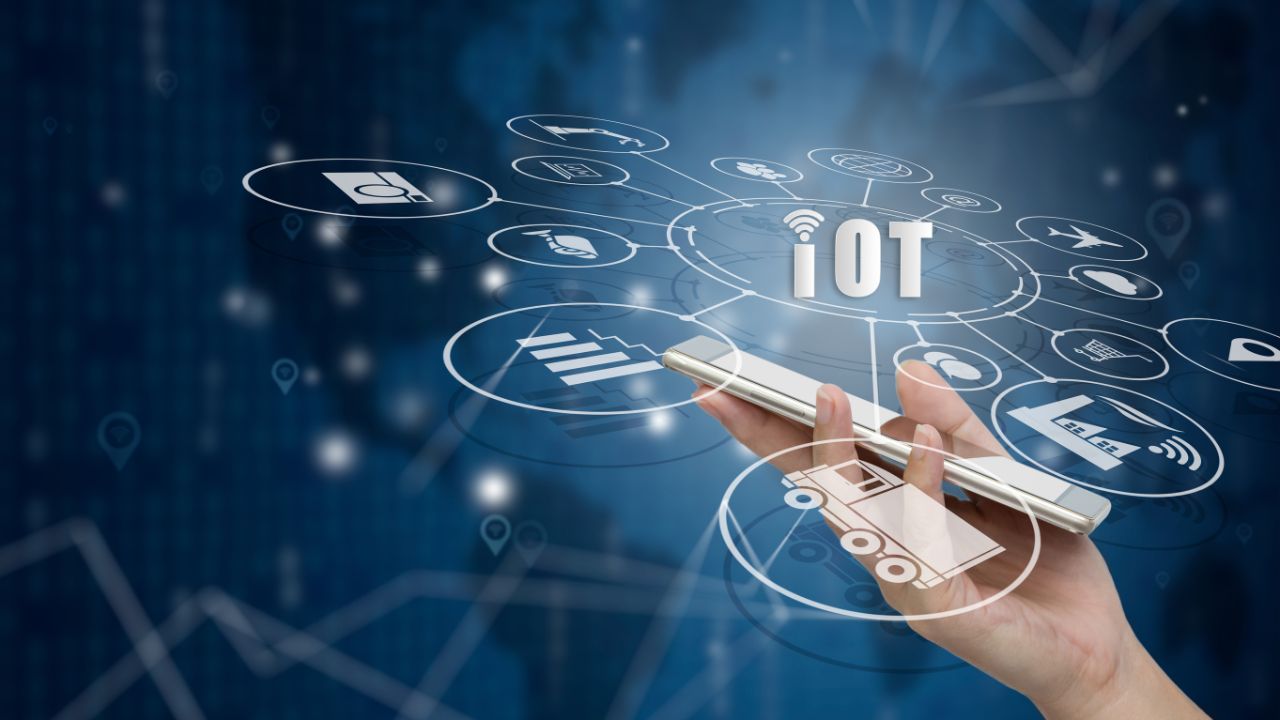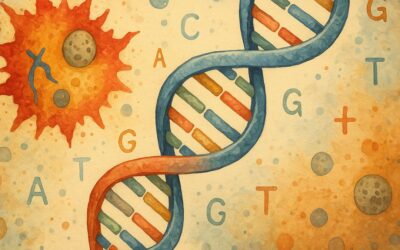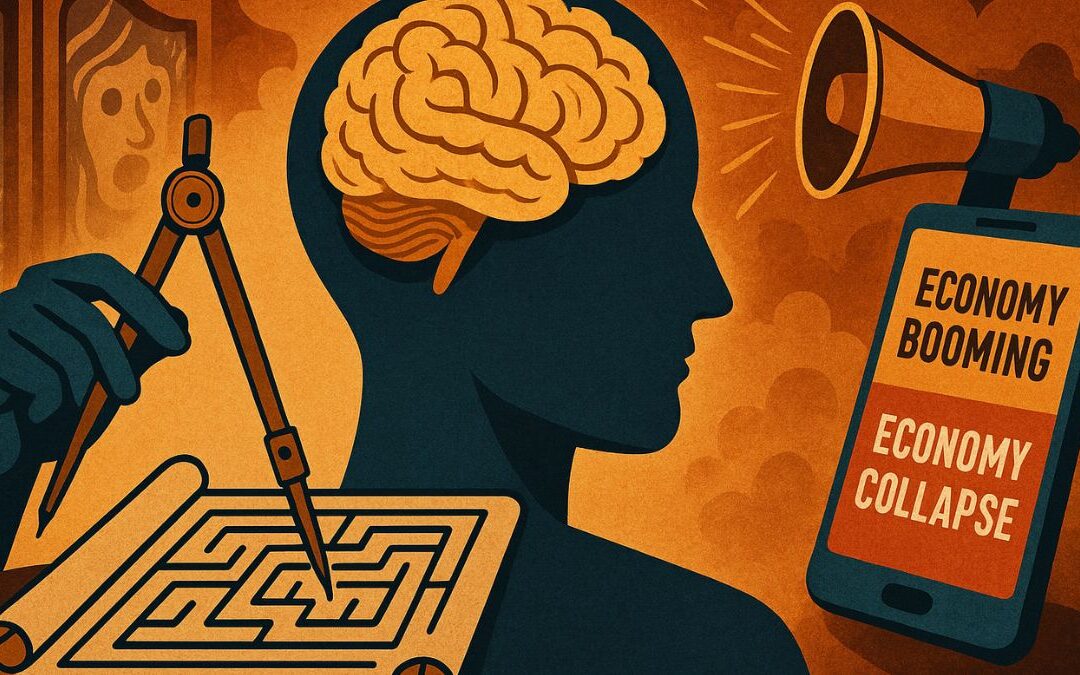- Article Audio
- Introduction
- Understanding IoT
- IoT: The Connected Ecosystem
- Driving Factors of IoT
- IoT and Big Data: A Synergistic Relationship
- IoT Applications: From Smart Homes to Smart Cities
- IoT and Industry 4.0
- The Future of IoT
- Challenges and Concerns
- Conclusion
- Keywords
- Key Takeaways
- You May Still Be Wondering about…
- How can IoT improve energy efficiency in smart homes and smart cities?
- What are the potential benefits of IoT in the healthcare industry?
- How can IoT and big data analytics be used to optimize agricultural practices and increase crop yields?
- What are the main security concerns associated with IoT devices, and how can they be addressed?
- What role does interoperability play in the widespread adoption of IoT, and what are the challenges in achieving it?
- How can IoT enhance the shopping experience and personalize marketing efforts in retail?
- What are some potential applications of IoT in transportation and traffic management?
- How does IoT contribute to the concept of Industry 4.0 and the development of smart factories?
- What are the implications of the increasing volume of data generated by IoT devices and the challenges in managing and analyzing it?
- How can digital twins revolutionize product development and performance prediction in various industries?
- How can IoT contribute to environmental sustainability efforts?
- What are the implications of data privacy concerns in the era of IoT?
- How can IoT help improve disaster response and emergency management?
- What are the economic implications of IoT adoption for businesses and industries?
- How can IoT contribute to bridging the urban-rural divide and promoting equitable development?
- Common Misconceptions
- Misconception: IoT is only about connecting smartphones and computers.
- Misconception: IoT devices always require an internet connection.
- Misconception: IoT is primarily about controlling devices remotely.
- Misconception: IoT devices are inherently secure.
- Misconception: IoT is only relevant for advanced technological environments.
- Misconception: IoT is a new concept without real-world applications.
- Misconception: IoT is limited to large-scale implementations and is not accessible to individuals.
- Article Audio
- Article Interactive
- Article Video
Article Audio
Introduction
The dawn of the 21st century ushered in an era of relentless technology and innovation. One of the most profound developments has been the rapid evolution of the Internet of Things (IoT), a network of interconnected devices that communicate and exchange data with each other. IoT is not a glimpse into a distant sci-fi future but a reality, shaping our world and daily lives in ways we may not even realize. This article explores the nuances of IoT, its applications, and its potential to transform the world into a smarter, more interconnected ecosystem.
Understanding IoT
The Internet of Things, often abbreviated as IoT, refers to the network of physical objects or “things” embedded with sensors, software, and other technologies that enable these objects to connect and exchange data with other devices and systems over the internet. These devices range from ordinary household items such as refrigerators, washing machines, and thermostats, to sophisticated industrial machinery and smart city technologies. The core idea behind IoT is not just about connectivity but smart connectivity, transforming the way we live, work, and interact with our environment.
IoT: The Connected Ecosystem
IoT creates a connected ecosystem, enabling seamless interaction between devices. This connectivity does more than just link devices; it paves the way for ‘smart’ interactions. For instance, a smart thermostat can learn a household’s patterns and adjust heating and cooling according to when the house is occupied. Similarly, wearable fitness devices monitor health and fitness data, providing insights and recommendations based on collected information.
Moreover, in a smart home environment, interconnected devices communicate with each other to enhance convenience and efficiency. Your alarm clock can signal your coffee maker to start brewing, or your fridge can notify you when you’re running low on groceries. This interconnectedness extends beyond homes, encompassing cities, industries, and virtually every sector.
Driving Factors of IoT
The exponential growth of IoT is driven by several factors. The widespread availability and affordability of broadband internet are among the most significant drivers. Additionally, more devices are Wi-Fi enabled and have built-in sensor capabilities. Technological advancements, such as cloud computing, have made it easier to store and process vast amounts of data. Also, the decreasing cost of processing power and connectivity, coupled with increasing smartphone penetration, has catalyzed IoT’s growth.
IoT and Big Data: A Synergistic Relationship
One of the most significant aspects of IoT is its relationship with big data. Every device in the IoT ecosystem generates data, leading to an unprecedented surge in data volume. This data, when analyzed using advanced analytics and machine learning algorithms, provides valuable insights that drive smarter decision-making and innovation. For instance, predictive maintenance in industries uses IoT data to anticipate and prevent machine failure, saving costs and enhancing efficiency.
IoT Applications: From Smart Homes to Smart Cities
The applications of IoT are boundless, spanning multiple sectors. In the consumer realm, IoT has given rise to the concept of ‘smart homes,’ where devices communicate with each other to enhance comfort, security, and energy efficiency. Homeowners can control lights, thermostats, and even security systems remotely using smartphones or voice commands.
IoT’s influence extends to healthcare, where ‘smart’ medical devices monitor patient health remotely, alerting healthcare providers of potential issues. Wearable fitness trackers and other health monitoring devices represent this intersection of IoT and healthcare, improving patient outcomes and transforming healthcare delivery.
In agriculture, IoT devices monitor crop conditions, weather, and soil quality, improving yield and reducing waste. In retail, IoT applications range from inventory management to personalized marketing, revolutionizing the shopping experience.
Smart cities represent one of the most ambitious applications of IoT. They leverage IoT technologies to enhance urban living, providing services more efficiently, and creating a more sustainable environment. For instance, smart grids optimize the delivery of electricity, reducing waste and ensuring a more reliable supply. Intelligent traffic management systems use real-time data to manage traffic flow, reducing congestion and improving road safety. Smart waste management systems optimize waste collection, leading to cleaner cities and reduced operational costs.
IoT and Industry 4.0
In the industrial realm, IoT is a key driver of the fourth industrial revolution, or Industry 4.0. It allows for seamless communication between machines, systems, and people, leading to what is often referred to as the ‘smart factory.’ In these environments, IoT devices monitor production processes in real-time, enabling predictive maintenance, improving safety, and increasing efficiency.
The Future of IoT
The future of IoT holds immense potential. As 5G technology becomes more widespread, it will enhance the speed and capacity of connections, enabling more devices to connect and interact. Furthermore, advancements in artificial intelligence and machine learning will lead to more ‘intelligent’ IoT devices that can make decisions and learn from their environments.
One area with tremendous potential is the development of ‘digital twins.’ These are virtual replicas of physical devices that data scientists and IT pros can use to run simulations before actual devices are deployed. This technology can drastically reduce the time and cost associated with product development and can also be used to predict future performance or identify potential issues.
Challenges and Concerns
Despite its potential, IoT is not without challenges. Security is a primary concern as every connected device is a potential entry point for cyber-attacks. Ensuring data privacy is another significant issue, especially with personal devices that hold sensitive information.
Interoperability, or the ability of devices from different manufacturers to communicate with each other, is another challenge. While standardization efforts are underway, the vast number of devices and manufacturers complicates this process.
Finally, managing the vast amounts of data generated by IoT devices is a significant challenge. It requires robust data analytics capabilities and the infrastructure to store and process this data.
Conclusion
The Internet of Things (IoT) represents a significant leap forward in how we interact with the world around us. From smart homes that enhance our comfort and convenience, to industrial applications that improve efficiency and productivity, IoT is transforming our world in profound ways. As technology continues to advance, and more devices become connected, the possibilities for IoT are virtually limitless.
However, realizing the full potential of IoT will require addressing significant challenges, including security, privacy, interoperability, and data management. As we navigate these challenges and look to the future, one thing is clear: the Internet of Things is here to stay, and it promises to make our world smarter, more connected, and more efficient.
Keywords
- Internet of Things (IoT): Refers to the network of physical objects or “things” embedded with sensors, software, and other technologies that enable these objects to connect and exchange data with other devices and systems over the internet.
- Connectivity: The state of being connected or interconnected, allowing devices to communicate and share data with each other.
- Smart Connectivity: Connectivity that goes beyond simple linking of devices, involving intelligent interactions and data-driven decision-making to enhance functionality and efficiency.
- Big Data: Refers to the large volume of data generated by IoT devices, which can be analyzed using advanced analytics and machine learning algorithms to extract valuable insights and drive innovation.
- Smart Homes: Homes equipped with interconnected devices that communicate and collaborate to enhance comfort, security, and energy efficiency.
- Wearable Devices: Electronic devices worn as accessories or embedded in clothing or accessories, capable of collecting data and providing personalized information or functionality.
- Predictive Maintenance: The use of data analysis and predictive algorithms to anticipate and prevent equipment or machine failures before they occur, reducing costs and improving efficiency.
- Smart Cities: Urban environments that leverage IoT technologies to improve various aspects of city living, including energy management, transportation, waste management, and public services.
- Industry 4.0: Also known as the fourth industrial revolution, it refers to the integration of IoT and other advanced technologies in industrial processes, leading to increased automation, connectivity, and efficiency.
- Digital Twins: Virtual replicas of physical devices or systems that can be used for simulations, testing, and predictive analysis before actual deployment.
Key Takeaways
- IoT refers to the network of interconnected devices that exchange data and enable smart interactions.
- IoT has applications in various sectors, including smart homes, healthcare, agriculture, retail, and smart cities.
- The growth of IoT is driven by factors such as the availability of broadband internet, sensor-enabled devices, cloud computing, and decreasing costs.
- The relationship between IoT and big data enables valuable insights and smarter decision-making.
- IoT poses challenges in terms of security, data privacy, interoperability, and data management.
- The future of IoT includes advancements in 5G technology, artificial intelligence, machine learning, and the development of digital twins.
You May Still Be Wondering about…
How can IoT improve energy efficiency in smart homes and smart cities?
IoT can improve energy efficiency in smart homes and smart cities through various means. In smart homes, IoT devices like smart thermostats can optimize heating and cooling based on occupancy patterns, resulting in energy savings. Smart lighting systems can adjust brightness and automatically turn off when not needed. In smart cities, IoT-enabled sensors and smart grids can monitor and optimize energy consumption, reducing waste and ensuring efficient energy distribution.
What are the potential benefits of IoT in the healthcare industry?
IoT offers several benefits in the healthcare industry. Remote patient monitoring through wearable devices allows healthcare providers to track vital signs, detect abnormalities, and provide timely interventions. IoT-enabled medical devices can automate data collection, improve diagnosis accuracy, and enable personalized treatments. Additionally, IoT facilitates telemedicine and remote consultations, making healthcare more accessible and efficient for patients in remote areas.
How can IoT and big data analytics be used to optimize agricultural practices and increase crop yields?
IoT devices in agriculture can collect data on factors such as soil moisture, temperature, and weather conditions. Combined with big data analytics, this information can be used to optimize irrigation schedules, implement precision farming techniques, and apply fertilizers and pesticides more effectively. Predictive analytics can help identify potential crop diseases or yield fluctuations, enabling proactive measures to mitigate risks and enhance overall crop yields.
What are the main security concerns associated with IoT devices, and how can they be addressed?
Security concerns with IoT devices include data breaches, unauthorized access, and potential exploitation of device vulnerabilities. To address these concerns, manufacturers and users must prioritize security measures such as strong device authentication, encryption of data transmission, regular firmware updates, and robust access controls. Implementing network segmentation, intrusion detection systems, and user education on best security practices are also crucial.
What role does interoperability play in the widespread adoption of IoT, and what are the challenges in achieving it?
Interoperability is essential for IoT devices from different manufacturers to seamlessly communicate and collaborate. It enables the creation of integrated IoT ecosystems and avoids vendor lock-in. However, achieving interoperability is challenging due to the lack of universally accepted communication protocols, standards, and compatibility issues among devices. Industry collaborations, standardization efforts, and the development of open platforms can help address these challenges and promote interoperability.
How can IoT enhance the shopping experience and personalize marketing efforts in retail?
IoT can enhance the shopping experience in retail by enabling personalized recommendations, smart inventory management, and seamless checkout processes. Beacons and sensors can track customer movements and preferences, providing tailored product suggestions. RFID technology can streamline inventory management, ensuring products are always available. IoT-powered payment systems and mobile apps offer convenient and frictionless checkout experiences.
What are some potential applications of IoT in transportation and traffic management?
IoT can revolutionize transportation and traffic management. Connected vehicles can communicate with each other and infrastructure to optimize traffic flow, reduce congestion, and improve road safety. Smart parking systems can guide drivers to available parking spots, minimizing traffic caused by searching for parking. IoT-enabled public transportation systems can provide real-time information on routes, schedules, and occupancy, enhancing the efficiency of public transit networks.
How does IoT contribute to the concept of Industry 4.0 and the development of smart factories?
IoT is a fundamental component of Industry 4.0 and smart factories. IoT devices embedded in machines and equipment enable real-time monitoring and control of production processes. This data can be used for predictive maintenance, ensuring optimal machine performance and minimizing downtime. IoT-driven automation and robotics enhance efficiency and precision. Overall, IoT facilitates seamless communication and collaboration between machines, systems, and humans, leading to intelligent and interconnected manufacturing environments.
What are the implications of the increasing volume of data generated by IoT devices and the challenges in managing and analyzing it?
The increasing volume of data generated by IoT devices presents both opportunities and challenges. On one hand, this data can provide valuable insights for businesses, governments, and organizations. However, managing and analyzing such large amounts of data can be complex and resource-intensive. Challenges include data storage, data integration from diverse sources, data quality assurance, and the need for advanced analytics tools and skills. Effective data management strategies, scalable infrastructure, and robust data governance frameworks are necessary to derive meaningful insights from IoT-generated data.
How can digital twins revolutionize product development and performance prediction in various industries?
Digital twins have the potential to revolutionize product development and performance prediction. By creating virtual replicas of physical devices or systems, data scientists and engineers can simulate and test various scenarios, allowing for faster and more efficient product development cycles. Digital twins can also be used for predictive analysis, enabling the identification of potential issues or failures before they occur. This reduces costs, improves product reliability, and enhances overall performance optimization.
How can IoT contribute to environmental sustainability efforts?
IoT can contribute to environmental sustainability efforts in various ways. In smart homes and buildings, IoT devices can optimize energy consumption, reducing waste and carbon emissions. In agriculture, IoT sensors can enable precision farming, optimizing resource usage and minimizing environmental impact. In transportation, IoT can facilitate intelligent traffic management, reducing congestion and lowering vehicle emissions. Additionally, IoT-enabled smart grids and energy management systems can enhance renewable energy integration, promoting a more sustainable energy ecosystem.
What are the implications of data privacy concerns in the era of IoT?
Data privacy concerns in the era of IoT are significant. With the collection and exchange of vast amounts of personal data, there is a need to ensure the protection of individuals’ privacy rights. Unauthorized access to IoT devices can lead to privacy breaches and misuse of personal information. Striking the right balance between data collection for valuable insights and respecting individuals’ privacy rights is essential. Implementing robust data encryption, secure authentication mechanisms, and transparent privacy policies are crucial in addressing these concerns.
How can IoT help improve disaster response and emergency management?
IoT can play a vital role in improving disaster response and emergency management. Connected sensors and devices can provide real-time data on environmental conditions, such as temperature, humidity, and air quality, helping in early detection and response to potential hazards. IoT can enable smart monitoring of critical infrastructure, such as bridges and buildings, ensuring their structural integrity during emergencies. Additionally, IoT devices can assist in locating and tracking individuals in distress, improving search and rescue operations.
What are the economic implications of IoT adoption for businesses and industries?
IoT adoption has significant economic implications for businesses and industries. It offers opportunities for cost savings, efficiency improvements, and new revenue streams. By leveraging IoT data, businesses can optimize their operations, streamline processes, and enhance productivity. IoT-enabled predictive maintenance can minimize equipment downtime and reduce maintenance costs. Moreover, IoT opens doors to innovative business models and product/service offerings. However, the upfront investment and infrastructure requirements for IoT implementation should be carefully considered.
How can IoT contribute to bridging the urban-rural divide and promoting equitable development?
IoT has the potential to bridge the urban-rural divide and promote equitable development. By leveraging IoT technologies, remote communities can gain access to essential services such as telemedicine, online education, and improved agricultural practices. IoT-enabled smart agriculture can enhance productivity and income opportunities in rural areas. Additionally, IoT-powered connectivity can enable remote work and digital entrepreneurship, reducing geographical barriers and promoting economic opportunities in underserved regions.
Common Misconceptions
Misconception: IoT is only about connecting smartphones and computers.
Reality: IoT encompasses a wide range of devices, from household appliances to industrial machinery, creating a network of interconnected objects.
Misconception: IoT devices always require an internet connection.
Reality: While many IoT devices rely on internet connectivity, some can operate in offline or local network environments.
Misconception: IoT is primarily about controlling devices remotely.
Reality: IoT goes beyond remote control; it involves data exchange, analytics, automation, and smart
Misconception: IoT devices are inherently secure.
Reality: Many IoT devices have security vulnerabilities, and ensuring their security requires proper configuration, updates, and robust security measures.
Misconception: IoT is only relevant for advanced technological environments.
Reality: IoT has applications in various sectors and can benefit both developed and developing regions, enhancing efficiency, sustainability, and quality of life.
Misconception: IoT is a new concept without real-world applications.
Reality: IoT is already being utilized in various industries and everyday life, with applications ranging from smart homes and healthcare to agriculture and transportation.
Misconception: IoT is limited to large-scale implementations and is not accessible to individuals.
Reality: IoT devices are available to individual consumers, and the market offers a wide range of affordable options for smart home devices, wearables, and personal IoT applications.











0 Comments